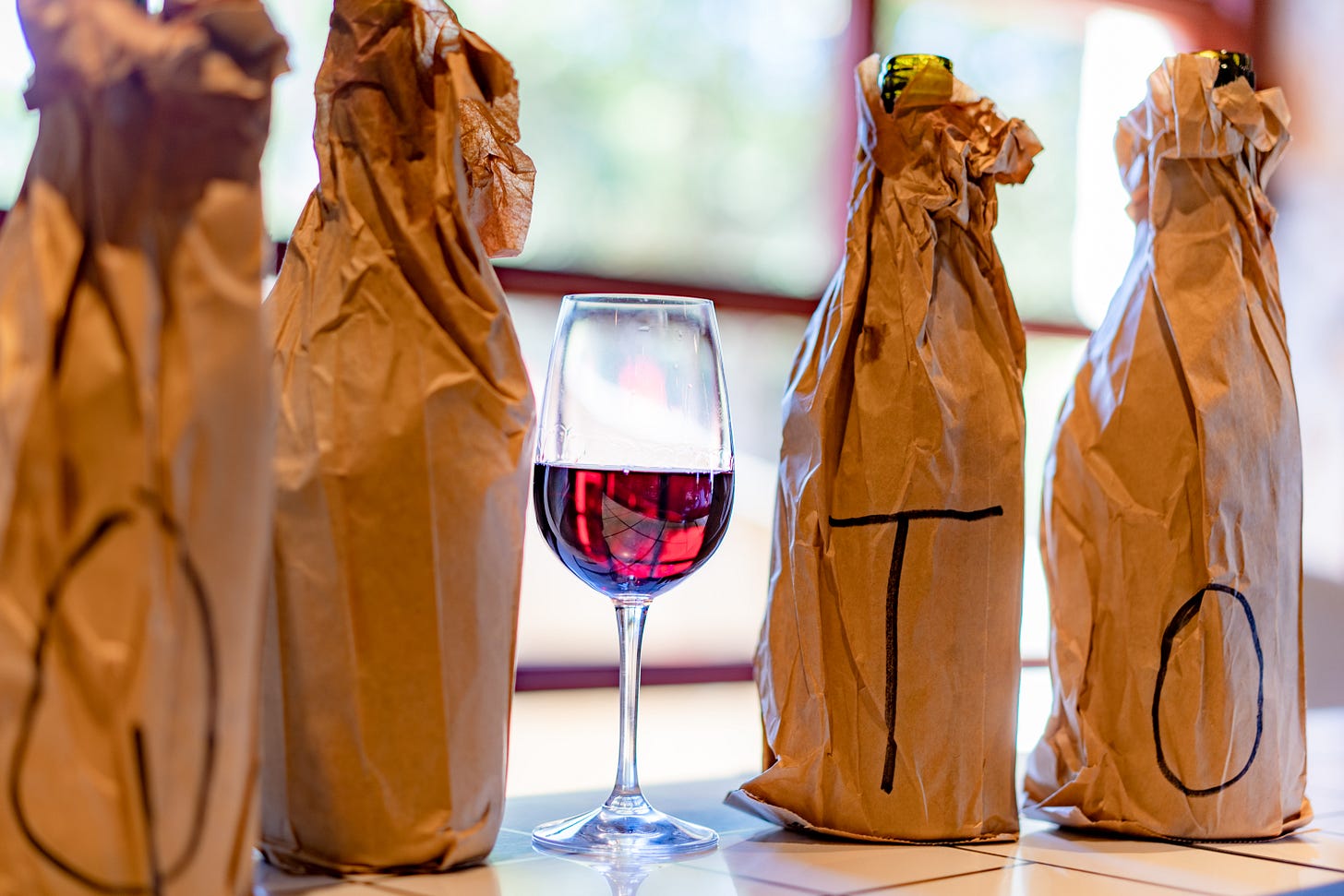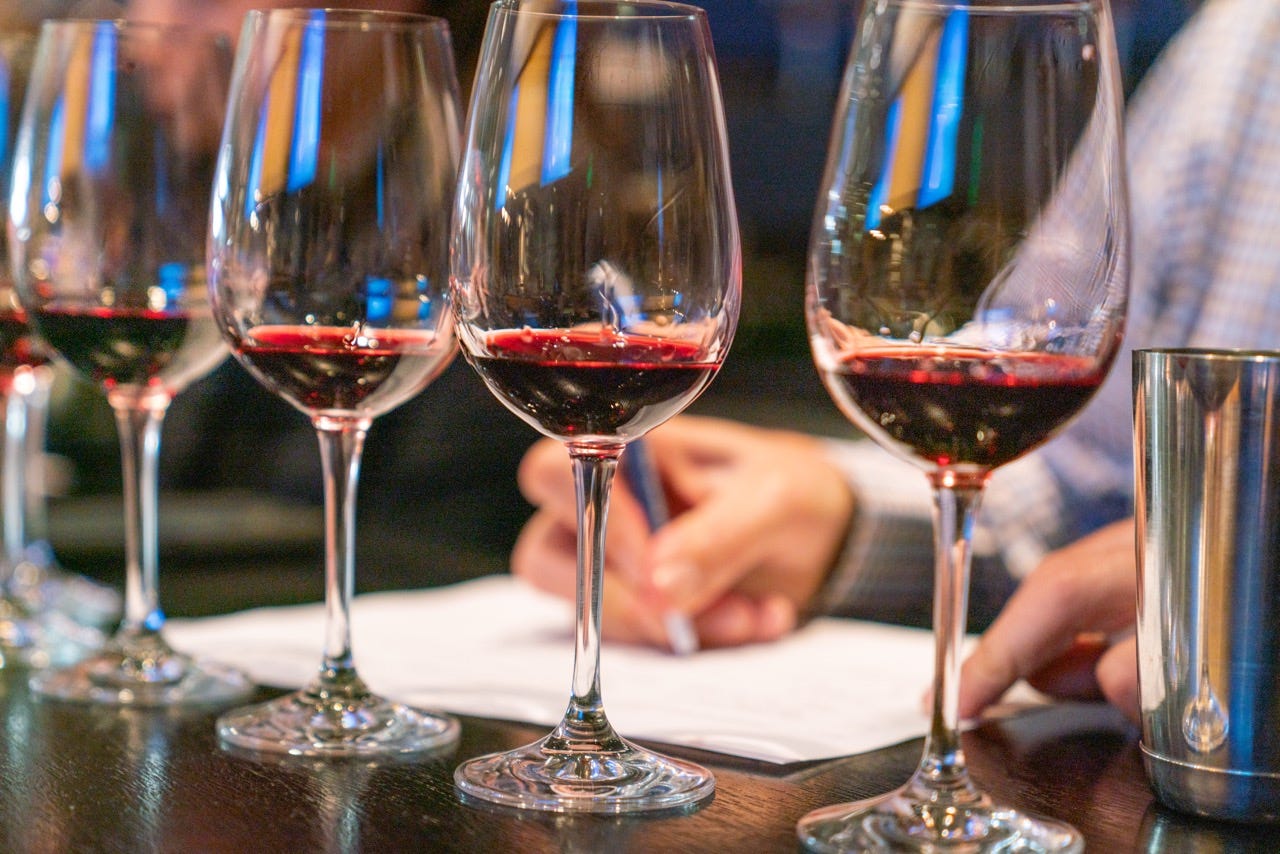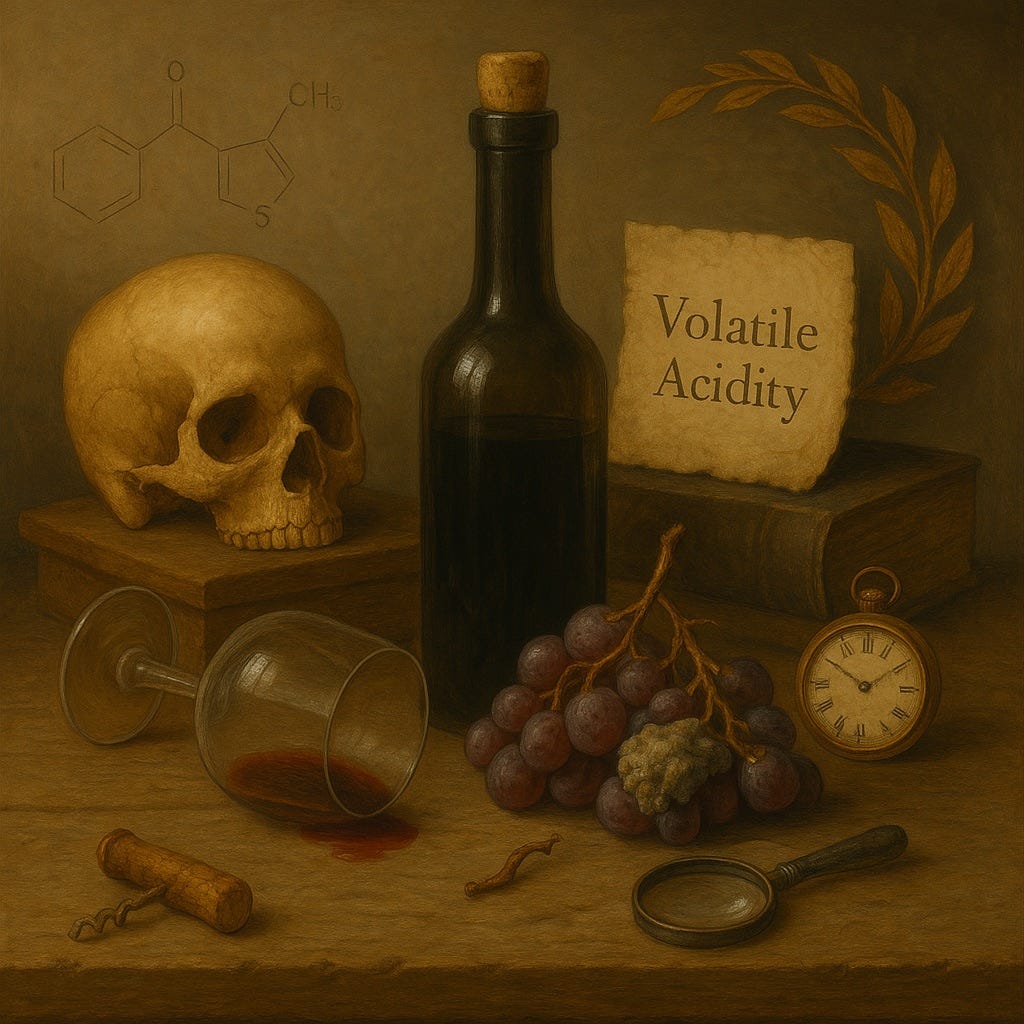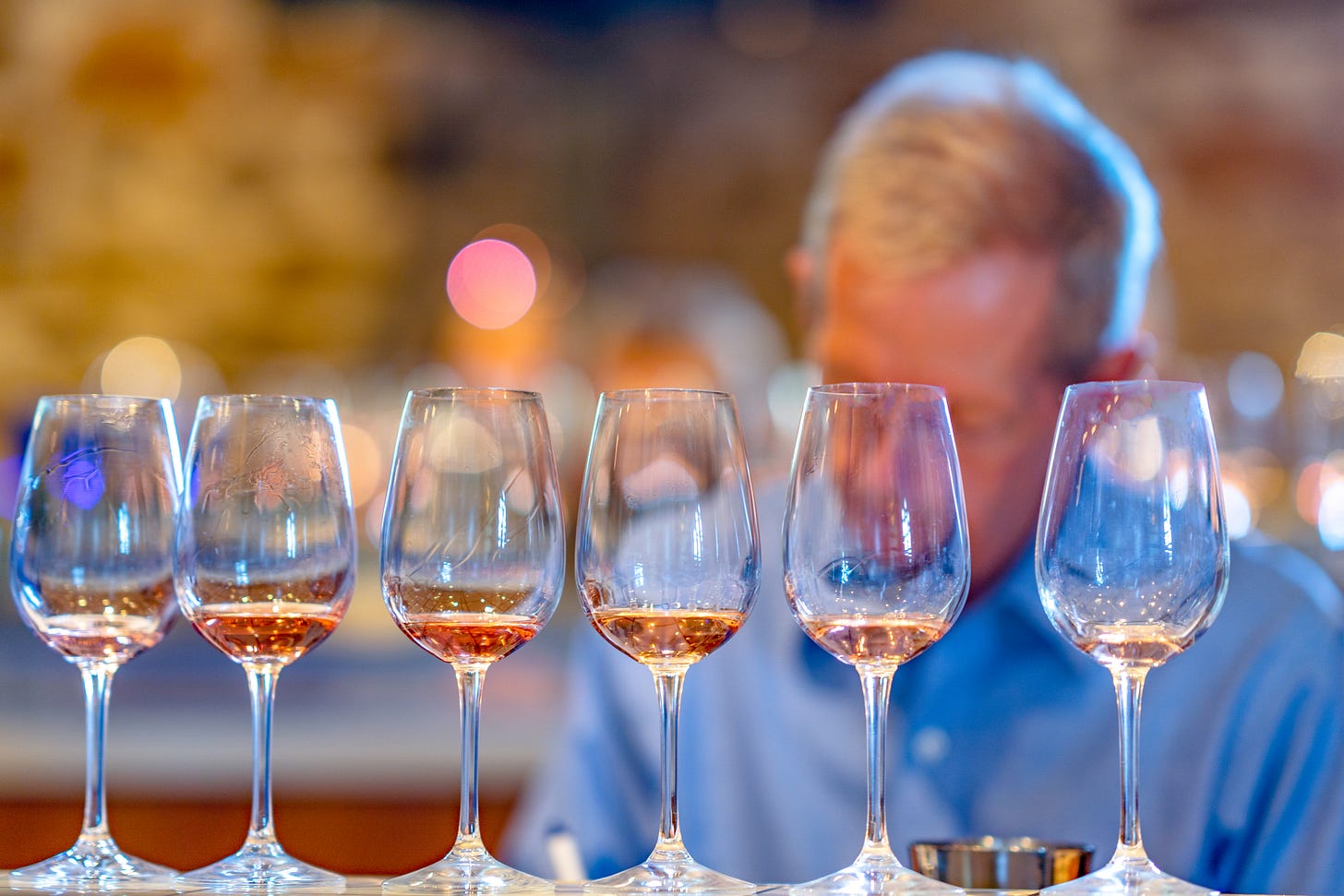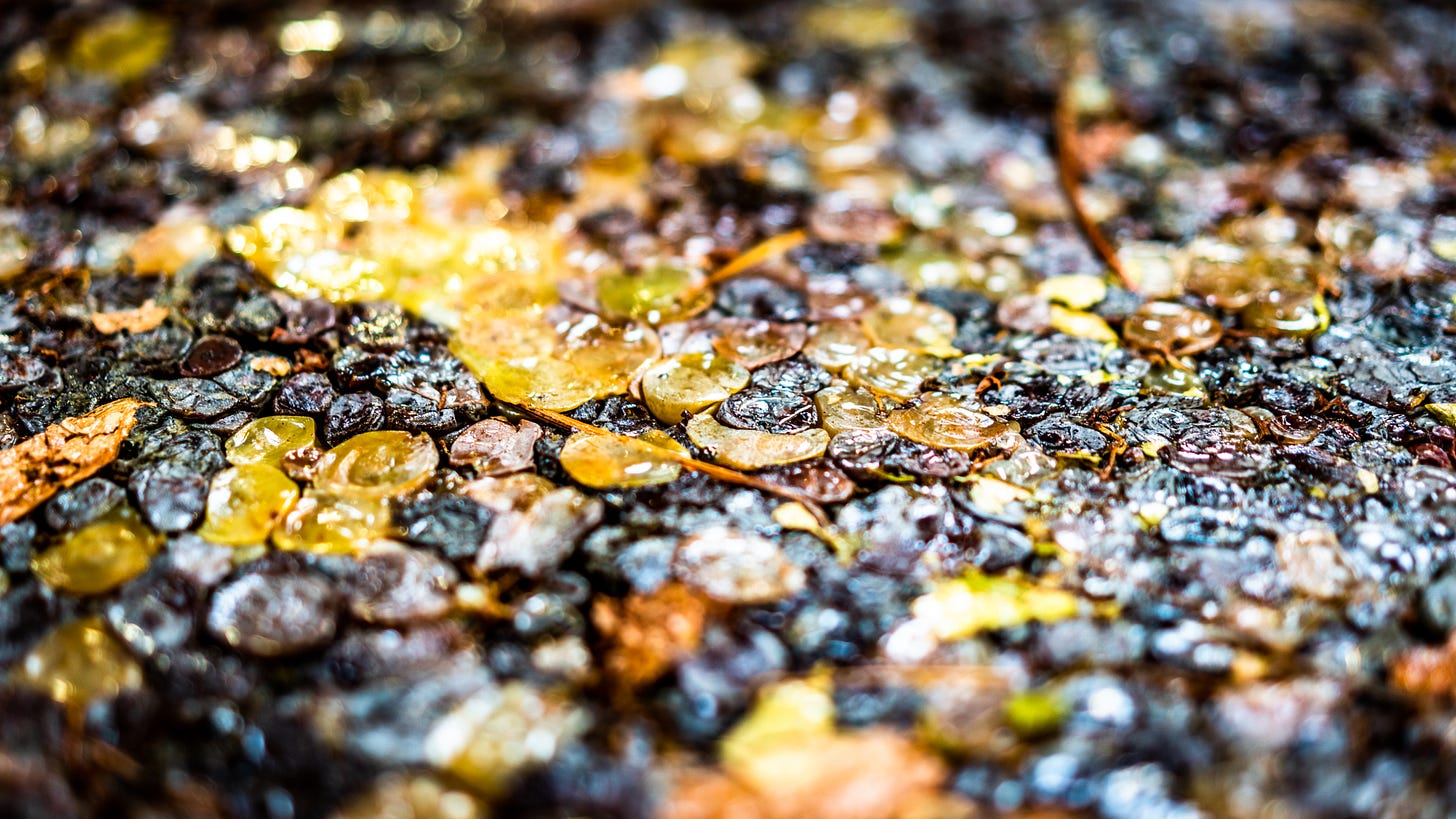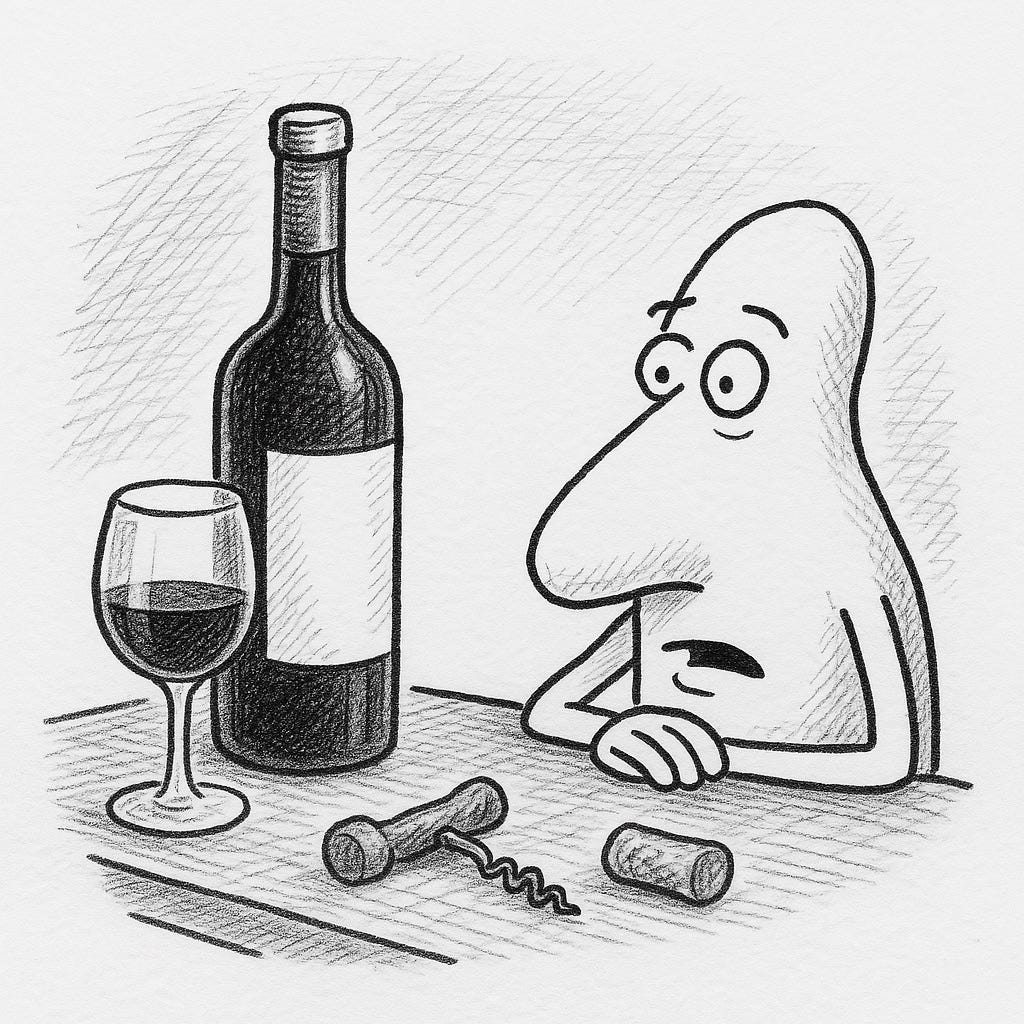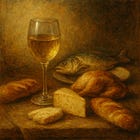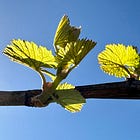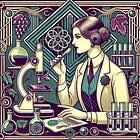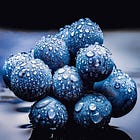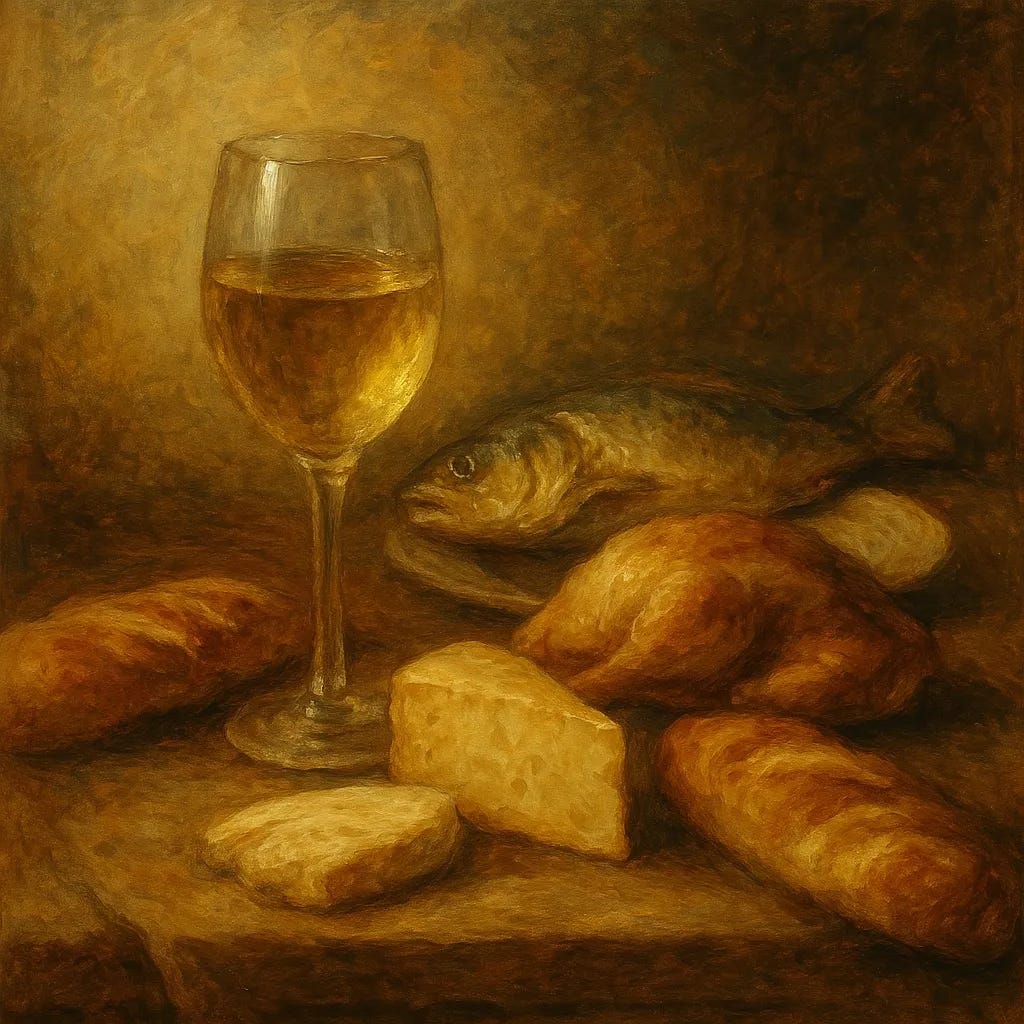Dan Berger’s Wine Chronicles: The Spoilage Spectrum
How Chemistry Shapes (and Sometimes Ruins) Wine
We Need Your Help
If you’re reading this, you care about independent, locally owned, ad-free storytelling — reporting that puts our region’s stories first, not corporate interests or clickbait.
Join a community that values in-depth, independent reporting. Become a paid subscriber today — and if you already are, thank you. Help us grow by liking, commenting and sharing our work.
The Spoilage Spectrum
By Dan Berger
NAPA VALLEY, Calif. —Wine is one of mankind’s greatest cultural art forms. Transforming mundane grape juice into an exotic, exalted elixir might be viewed by some as magic. The process entails capturing Mother Nature’s gifts and then altering her grand plan in which a plant’s ultimate intention is to produce more progeny.
“The intentionally directed spoilage of grape juice.” — Winemaker Clark Smith
All plants need to procreate, to expand the breed. Grapes are sweet to attract birds, which will ultimately eat the fruit and later poop the seeds, allowing additional plants to grow. By interrupting this procedure, mankind does Mother Nature’s work in a different way. We plant new vines because the resulting potable has such glorious properties that it is heralded by kings and paupers, extoled biblically and revered as are few other comestibles are.
One thing that has made wine so interesting to consumers around the world is its almost infinite variety, which starts with the regional uniqueness of a particular site. And the wine from that site can differ widely from another site that might look like the first site’s twin.
Challenge your vocabulary with this week’s mystery word. Submit your answer in the poll, and check the bottom of the page for the correct answer.
Another thing that makes wine fascinating is the difference between grape varieties, which we explored here in three recent articles about various widely known wine grapes. Although we only mentioned two dozen grape varieties, there are literally thousands growing around the world that are made into varietal wines. Most have absolutely no impact beyond their own regions.
In Italy alone, says the “Oxford Companion to Wine,” it is estimated that about 2,000 indigenous grapes make table wines.
But as exalted as wine has been over the centuries, at its most mundane level it is nothing more than a chemical soup. (Winemaker Clark Smith told me that his definition of wine was “the intentionally directed spoilage of grape juice.”) And with literally dozens of chemical elements in its makeup, any one of these that is out of sync could end up ruining what might otherwise be a masterpiece.
One verboten topic in the quest to describe otherwise good wines is that of spoilage. Almost all wines, including some of the most revered, have trace levels of deterioration. They might be trivial and never seen by consumers, but they exist. And though they might not interfere with the enjoyment of the wine, such problems often drive winemakers crazy.
Some experienced tasters can detect these problems. Yet spoilage aspects of wine are rarely if ever mentioned in the comments of wine columnists and critics about specific wines. A few such writers ignore minor spoilage elements because other aspects of a particular wine are so engaging that they are smitten.
Or perhaps the writers have never been educated properly in the ways that fine wine should be evaluated – or in what many of the more obscure spoilage elements are. More than one wine critic has ignored spoilage elements that are fairly easy to detect. Some might not be able to detect certain spoilage elements at all.
One critic once gave a near-perfect score to a red wine that had obvious volatile acidity. Had it been submitted in a graduate class at UC Davis, the student making it would have gotten an F. The critic loved the wine.
Probably the most controversial spoilage component in the world of red wine is Brettanomyces, referred to by winemakers and most wine collectors simply as “Brett.” It is a yeast that is particularly persistent. It exists not only in the wild but can also be resident in wineries, thus infecting equipment such as barrels, hoses and tanks.
Lots of research has been done in the area of Brett control. A Brett aroma might not develop in a wine, but when it does, it can be relatively identifiable. Probably all red wines have a trace of Brett, but it rarely is a problem until the population of the organism reaches such a substantial level that its aromas become assertive. The aroma has variously been described as “sweaty saddle,” “wet dog,” “wet wool” and several other unattractive scents. It is not uncommon to find aromas associated with Brett in the red wines of Bordeaux, but it has declined in recent years.
Another byproduct of Brett also can smell slightly odd — rather like burnt cigarette smoke. In small amounts, Brett has been mentioned by some wine writers as adding a note of “complexity.” But others find even a small trace of this aroma to be anathema.
Brett can also increase the astringency in a red wine. Some Brett experts suggest that people who say they can smell Brett really are smelling something else altogether.
One of the most curious aspects of Brett aroma in red wine is that some wine critics accept that it is controversial, and they euphemistically refer to it in their reviews by saying that the wine is “countrified” or “rustic.” Smith has written that there is such a thing as “good Brett,” which actually adds some intricacy to a red wine.
A different type of spoilage, which is occasionally misidentified as Brett, is Pediococcus. Some wine-lovers say it smells like a baby diaper. This is much less understood by consumers, partially because it is so rare. I might see only one example in the course of a year. It is related to lactic acid.
Both Brett and Pediococcus actually have positive uses in the world of beer-making – when they are controlled by a master brewer. The result can be a complex and fascinating beer that even winemakers say they love.
During the 1990s, it became fairly common for many Americans to say they adored chardonnays that were “buttery.” This aroma can occasionally be confused with the aroma of oak (from aging the wine in barrels or more likely subjecting the liquid to some form of wood that has been treated to impart an aroma, such as wood staves, oak chips and other forms of legal flavor additives).
A buttery aroma can come from diacetyl, which can be encouraged by converting malic acid (apple-scented) to lactic acid (yogurt-y). This can occur when any white wine, usually a chardonnay, is subjected to a malolactic fermentation, which converts the stronger malic acid to the softer lactic acid.
I occasionally see chardonnays that probably should not have undergone a second fermentation because the aroma that resulted was not butter but instead turned out to smell more like inexpensive margarine.
Putting a chardonnay (or any white wine) through the procedure known as malolactic fermentation frequently is done mainly to lower the acidity in a wine where the acid level is significantly higher than the winemaker believes it should be. Winemaking has become so sophisticated that chardonnay today frequently undergoes malolactic fermentation, and it is impossible to detect any specific character associated with the procedure.
When wine is being made, a certain amount of oxygen is necessary to facilitate the formation by yeasts of alcohol tolerance factors that prevent stuck fermentations (fermentations that quit unexpectedly). However, when oxygen is withheld either intentionally or accidentally (so the wine is anerobic), it can smell slightly sulfur-y, like hydrogen sulfide (rotten eggs) or just slightly stinky. It is related to the next spoilage component.
Mercaptan is another sulfur compound that smells a little skunky or like onions or shallots. In tiny amounts, mercaptan can emulate freshly ground coffee. As such, it might be observed by some critics as a positive element in a red wine, but it can also be seen by extremely good tasters for what it is – spoilage.
For centuries, winemaking around the world was a remarkably rudimentary activity that was practiced in just about every country in the world where grapes could grow. For hundreds of years, all forms of zymurgy, including beer-making, were not considered a science. Its practice was locally conducted by strategies that were passed down by oral tradition and that differed from one town to another.
The making of table wine really did not become sophisticated on a wide basis in the United States until the 1960s, notably with the introduction of stainless-steel tanks for protecting fragile grape juice, the advent of cold fermentation, improved hoses to transfer wines from place to place, the development of refrigeration systems to protect white wine from spoilage, the development of prepared yeast strains to conduct fermentations, computerized analytic systems and dozens of other advances.
One of the greatest improvements of all was the invention of filtration systems that could remove extremely small unwanted components from liquids such as grape juice and white wine. Filtering out all traces of yeast allowed for production of slightly sweet wines without risking bottles exploding due to refermentations occurring in the bottle. More recently, in-winery practices have replaced these systems by fostering beneficial microbiomes, tactics similar to Integrated Pest Management in the vineyard.
Later such filtration systems would be employed to try to control negative elements like Brett, which were known to be extremely difficult to eradicate in the winery.
The appearance of a wine seems to be a huge factor with some wine-buyers. In some cases a wine might be slightly cloudy or hazy. In most cases this is nothing more than the result of a winemaker deciding against filtration. A winemaker who chooses not to filter a wine just before bottling usually does so to allow it to display more of its character.
In most cases filtration before bottling is one of two techniques that are used primarily for appearance purposes. The other is cold stabilization. If either or both tactics are employed, the resulting wine usually looks pristine. But many winemakers will say that either procedure — and especially both — actually removes aromatic and flavor elements that can be enjoyable.
Filtering a classic red wine is a technique that minimizes the possibility that it will, sooner or later, display a sediment. I have had several wines that had sediment and aged gorgeously, and I have had numerous wines that were filtered and did not display as much character as I would have imagined.
The world’s finest red wines are usually bottled without filtration. Winemakers who filter their wines do so primarily for the sake of appearance and to prevent microbial activity in the bottle, but they do so at the expense of the development of complexities during aging, risking some of the depth that characterizes great wine.
Since both filtration and cold stabilization are considered to be somewhat esoteric topics, winemakers are loath to talk about them, but these subjects should be front and center for those who collect fine red wines that they intend to age.
—
Wine Discovery:
NV Domaine Chandon Brut, California ($23) – This longtime producer of quality sparkling wines has always been reliable, but competitors have grown up over the decades to compete with fine-quality products. This recent nonvintage offering is a stylish and characterful version with 57% chardonnay and 45% pinot noir. The wine is classic in stye because of a very low dosage (level of sugar), and it should comport itself admirably with caviar or smoked salmon.
—
Dan Berger has been writing about wine since 1975.
Today’s Polls:
This Week's Word Challenge Reveal:
The correct answer is A: "A text with layers of revisions." The word "palimpsest" comes from the Greek palimpsēstos, meaning “scraped again.” It originally referred to parchment that had been reused — early scribes would erase older writing so the material could be written on again, often leaving faint traces of the original beneath the new text. The Oxford English Dictionary defines it as “a manuscript or document that bears traces of earlier writing beneath the surface.”
Famous historical palimpsests include the Archimedes Palimpsest, where lost works of the ancient Greek mathematician were discovered beneath a Christian prayer book, and Codex Ephraemi Rescriptus, a fifth-century Greek Bible overwritten with sermons. Over time the word has also taken on metaphorical meaning, describing anything with visible layers of history — from cities and landscapes to memory itself.
Explore These Related Articles:
Browse All Napa Valley Features Stories
—
The views, opinions and data presented in this article are those of the author and do not necessarily reflect the official policy, position or perspective of Napa Valley Features or its editorial team. Any content provided by our authors is their own and is not intended to malign any group, organization, company or individual.





